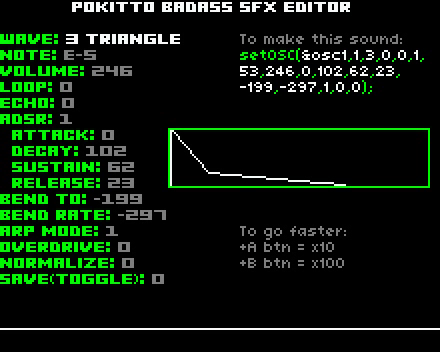
We’re going to settle this sound generation problem once and for all
First step is that you’re going to get a) samples support b) an editor, that allows you to test different kind of sounds AND will output the necessary code to generate the sound
8000 Hz playback version of SFXeditor
sfxed8k.bin (119.7 KB)
11025 Hz playback version
sfxed11k.bin (119.7 KB)
16000 Hz playback version
sfxed16k.bin (119.7 KB)
22050 Hz playback version
sfxed22k.bin (119.7 KB)
Some example sounds:
Badass alien craft passing by:
setOSC(&osc1,1,5,1,1,1,60,254,6,5,244,6,-300,-2,12,1,0);
Accelerating Atari2600 race car:
setOSC(&osc1,1,3,0,0,0,30,209,18,17,244,18,60,1,0,1,0);
Classic Laser blaster:
setOSC(&osc1,1,1,1,1,1,61,254,0,19,2,0,-215,-20,0,0,0);
